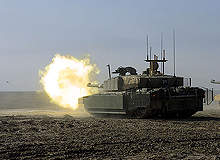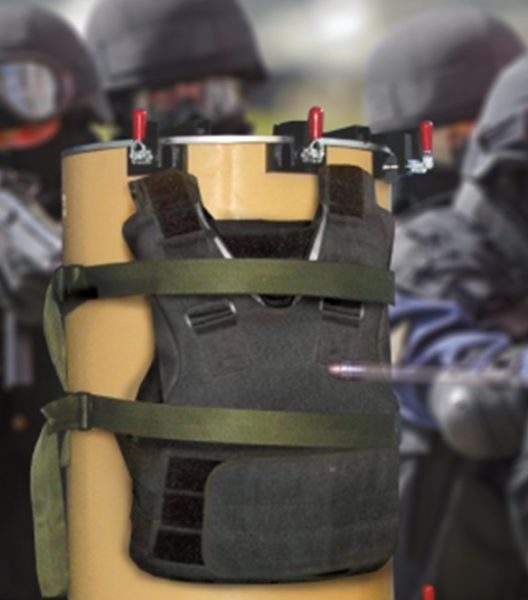
Caught between a mounting national deficit, a difficult economic climate and ongoing operations in the Middle East, the British Government has been forced to launch its Strategic Defence and Security Review (SDSR) in order to evaluate its defence spend and outline cuts to the Armed Forces, the most comprehensive review in decades.
Although the review itself has been drafted under Britain’s new Coalition government, Prime Minister David Cameron was quick to blame the previous leadership, citing what he sees as Labour’s “scorched earth” approach to running the economy and general mismanagement of the country’s defence.
Under the review, the army itself will be restructured to focus around five multi-role brigades, each including reconnaissance, armoured, mechanised and light infantry units as well as those in a supporting role.
The army will retain 16 Air Assault Brigade for intervention options, while approximately 7,000 troops will be axed, leaving personnel figures around the 95,000 mark. Numbers of the Challenger 2 Tank will also fall by approximately 40%, and 35% of heavy artillery will suffer the same fate.
The army do, however, hope to deliver one fully deployable, service level headquarters and regenerate another, separate, deployable divisional headquarters.
Britain can no longer go it alone
How well do you really know your competitors?
Access the most comprehensive Company Profiles on the market, powered by GlobalData. Save hours of research. Gain competitive edge.

Thank you!
Your download email will arrive shortly
Not ready to buy yet? Download a free sample
We are confident about the unique quality of our Company Profiles. However, we want you to make the most beneficial decision for your business, so we offer a free sample that you can download by submitting the below form
By GlobalDataCritics of the review itself have questioned Britain’s ability to retain its commitment to Afghanistan, despite Prime Minister David Cameron insisting that it would not be affected by the budget cuts and loss of personnel. Former head of the army General Sir Richard Dannatt suggested that Britain will be unable to sustain the deployment in the country, adding that: “to go on with a routine deployment of 10,000 is unsustainable.”
A significant element of the SDSR focuses on new policy on military operations, capping the force Britain can send to any future frontline.
In the event of a major war operation, such as in Afghanistan and Iraq, a maximum force of 30,000 troops can be deployed in order to maintain national security despite reductions in the number of retain personnel. In comparison, a total of 45,000 were initially sent to Iraq.
In addition, any force responsible for “enduring operations” has been capped at 6,500, whereas there are currently 10,000 in Afghanistan. With a new emphasis placed on cooperation between Britain and its allies, namely France and the US, the SDSR has significantly dented the possibility of the UK mounting an independent operation again.
Defence officials have also launched further studies to examine how many service personnel will be required to sustain the country’s operations in the future, which could potentially lead to further personnel cuts later in the decade.
Dwindling aerial support
The entire fleet of 120 Tornado GR4s has been scrapped as it poses a greater cost reduction than alternatives, saving a total of £7.5bn over the next five years, while numbers of the Eurofighter Typhoon will fall from 160 to 107, based at a single RAF airfield in order to save £1bn.
The 36 Hercules transport aircraft will be phased out and retired ten years early before being replaced by 22 new A400M aircraft and 10 Airbus A330s in order to fulfil the Royal Air Force’s transportation needs, given their ability to provide air-to-air refuelling. The planned Nimrod MR4 spy plane has also been axed, despite £3.6bn having already been spent on its development.
Critics of the review have condemned the lack of protection for the UK, with Military Aviation Authority Director General Air Marshall Tim Anderson claiming: “The cuts could leave the UK vulnerable to a terrorist attack similar to 9/11.”
The Royal Navy will, arguably, suffer the severest cuts as construction of one of the two Queen Elizabeth class aircraft carriers, the HMS Prince of Wales, has been placed in extended readiness and is likely to remain in such a state until budgetary restraints subside.
This leaves 19 frigates and destroyers, consisting of six Type 45 Destroyers and Type 26 Frigates.
In order to compensate for the scrapped Queen Elizabeth class carrier, the decommission of the Ocean and Illustrious class carriers has been put on hold, while four frigates and a Bay Class Amphibious ship have been decommissioned.
The immediate scrapping of the navy’s fleet of Harrier jets means that Britain will have no fully operational aircraft carrier until 2010, which a senior Navy officer informed the Daily Telegraph was a “serious risk that could cost lives.”
When in service, the retained Queen Elizabeth class carrier will carry 12 Joint Strike Fighter jets and helicopters for a wide variety of missions, whilst seven Astute submarines will be retained in order to maintain the country’s nuclear deterrent.
Several capabilities will also be maintained by the navy, including the controversial Trident operation, while personnel will be reduced by 5,000 to 30,000 by 2015, assuming a mission requirement of 29,000 by 2020.
The Trident program, itself a controversial issue given the alternative views of the Conservative and Liberal Democrat parties that constitute the Coalition government, has been altered under a new co-operative treaty signed by the UK and France.
Whilst the Conservative party have traditionally backed the UK’s nuclear deterrent programme, the Liberal Democrats election manifesto claimed that the party would “say no to the like-for-like replacement of the Trident nuclear weapons system.”
£750m will be saved over the course of four years by cutting the number of warheads, while the co-operative treaty will see a centre for testing technology development established in the UK and testing carried out in France.
Under what Defence Secretary Liam Fox sees as the “most appropriate nuclear deterrent,” both the UK and France will retain its own warheads and nuclear secrets will not be shared, and the UK will maintain its close relationship with the US on the Trident program.
What the future holds
The SDSR itself was met with largely mixed reviews. BAE Systems welcomed the review, citing its cooperation with the Ministry of Defence in identifying areas in which efficiencies could be delivered as a positive step.
ADS, UK’s Aerospace, Defence and Security trade organisation, chose to voice its concern, with ADS Chairman Ian Gooden adding: “The key test of the review will be the extent to which it ensures the UK has the industrial capabilities to address long term future security needs and that the armed forces are equipped for the tasks that the nation asks of them.”
The UK National Defence Association (UKNDA), however, was not so forgiving, branding the SDSR as a “missed opportunity to strengthen the armed forces” and accusing Ministers of gambling with the nation’s security.
The UKNDA continued to accuse the Coalition government’s defence policy as being “muddled and incoherent,” before announcing its belief that the review “risked leaving Britain’s Armed Forces with very significant gaps in their operational capabilities.”






